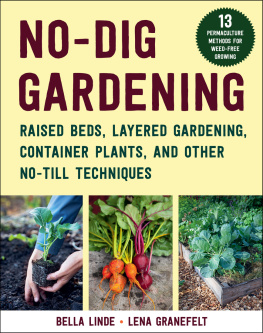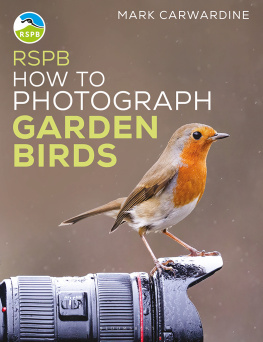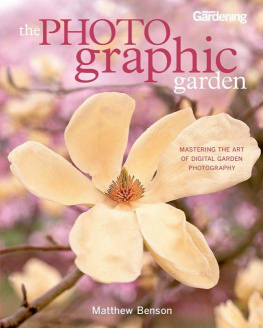

THE GARDEN PHOTOGRAPHY WORKSHOP
Tips and Techniques for Capturing Your Garden
ANDREA JONES
Timber Press
Portland, Oregon
With special thanks to my husband, Alasdair Currie, for his help and support during the making of this book, enduring with me late nights and early mornings writing and rewriting, photo editing, processing, scanning, and retouching, not to mention walking the dogs and caring for our wild garden while my mind was on this exciting project.

CONTENTS
WHY PHOTOGRAPH YOUR GARDEN?
Gardens are ephemeral. Yet they linger long in our imaginations and they bind us with invisible tendrils, occupying our thoughts and developing ideas in our heads when we are elsewhere or engaged in other pursuits.
I have spent at least a couple of decades attempting to capture the essence of gardens, to fix their magical moments and uncover their secrets. I have discovered that it is through the lens that a garden truly reveals itself to me, and through my images I can often surprise the gardener who has designed, created, and tended it.
Every garden has a unique beauty. In the course of my work I have photographed a huge range, from magnificent royal palaces to small domestic yards, finding something original in all of them. No matter how grand or modest, each of these gardens is the endeavour of someone with a unique vision who has been willing to expend energy and passion in order to see that vision flourish.
For those of us who love to plan and plant, coax the wayward growth of climbers, and clear the weeds that would smother small treasures, capturing in pictures the unfolding seasons or the tiny details of buds and bark is almost irresistible. Now that digital cameras are so inexpensive, smart phones always at hand, and tablets so user-friendly, it has never been easier to catch that instant when the first snowdrop emerges or when you draw back the curtains on an autumn morning to discover that, overnight, the leaves of your maple tree have fallen in a perfect, scarlet circle.
Beyond these simple pleasures, the reasons that gardeners choose to photograph their gardens are myriad. Printed garden photographs transform beautifully into cards, calendars, or photo booksthe perfect gift or keepsake for reflection and observationand its now easier than ever to create a visual diary on social media with one tap of a smart phone button. More practically, photographing your garden can help you remember which planting combinations worked and which ones didnt, when you planted or harvested from one year to the next, or how a garden construction project progressed. Capturing images to promote personal businesses or to entice visitors for fundraising opportunities are just a few more reasons why we may find ourselves wandering around the garden, camera in hand.

Early morning autumn light at our home and B&B, Alton Albany Farm.
In talking to gardeners and from my own experience, I know that for various reasons these snatched photographs of our gardens can often be disappointing, failing to capture the brilliance of the moment. Yet this neednt be the case. With just a little more know-how and the willingness to practise and experiment, you can overcome many of the obstacles to taking great images.
You certainly dont need to have a showpiece garden in order to be enthralled by your outdoor space. Neither do you have to be a professional photographer to achieve the images you desire. By training your eye, adopting and practising a few new techniques, it is possible to achieve photographs that are rich in detail, reflecting your garden as you truly see it or in some cases making it look even better than it is. Above all, you should really be enjoying the process.
Mine is a garden in the making, a long-term project only recently begun. By continually photographing it I am charting its evolution, capturing the changes through the seasons and from year to year as it flourishes. While it remains immature I love to use small corners as stage sets for containers of herbs or spring bulbs or any number of other garden projects, relishing the images they give me of fresh greens or vibrant colours. My husband, Alasdair, will end up using some of the photographsthe wider views of our garden and our wonderful local landscape in Scotlands Stinchar Valleyon his B&B blog to record the passing of the seasons where we live.

Lime trees through the seasons in Scotlands Stinchar Valley.
I have to admit to being slightly obsessed with photographing my own garden, and its always the light that draws me out. When my garden is bathed in the golden light of early morning or in the golden hour before the sun goes down, I will often grab a camera and rush outdoors or to a window, intent on capturing the effect before it is lost. And herein lies the challenge, one that you might have encountered too, because this approach is unlike the way that I photograph for books and magazinessometimes watching the weather closely for days or even weeks, planning each shot in advance, and even setting up before sunrise to be ready for that moment when the light is perfect. When it comes to my own garden, I am usually in the middle of doing something else when the light catches my eye. So I have to respond instinctively and react quickly to circumstances instead of anticipating them.
I understand just how tricky it can be to make split-second decisions about equipment, angles, and apertures while the sun is quickly climbing higher and higher or that coveted frost is starting to melt. Under such circumstances, familiarity with your garden and camera equipment, whatever you have, will always pay dividends. By practising some new techniques youll be able to make your photographs more exciting yet reliable, and be ready for that magical moment when it comes.

Carrick Hills with sheep.

Beech avenue, Barr Trails.

Alton Albany Farm in frost.

Frosted umbellifera.
HOW TO USE THIS BOOK
Weve talked about why to photograph your garden, but what about how
















